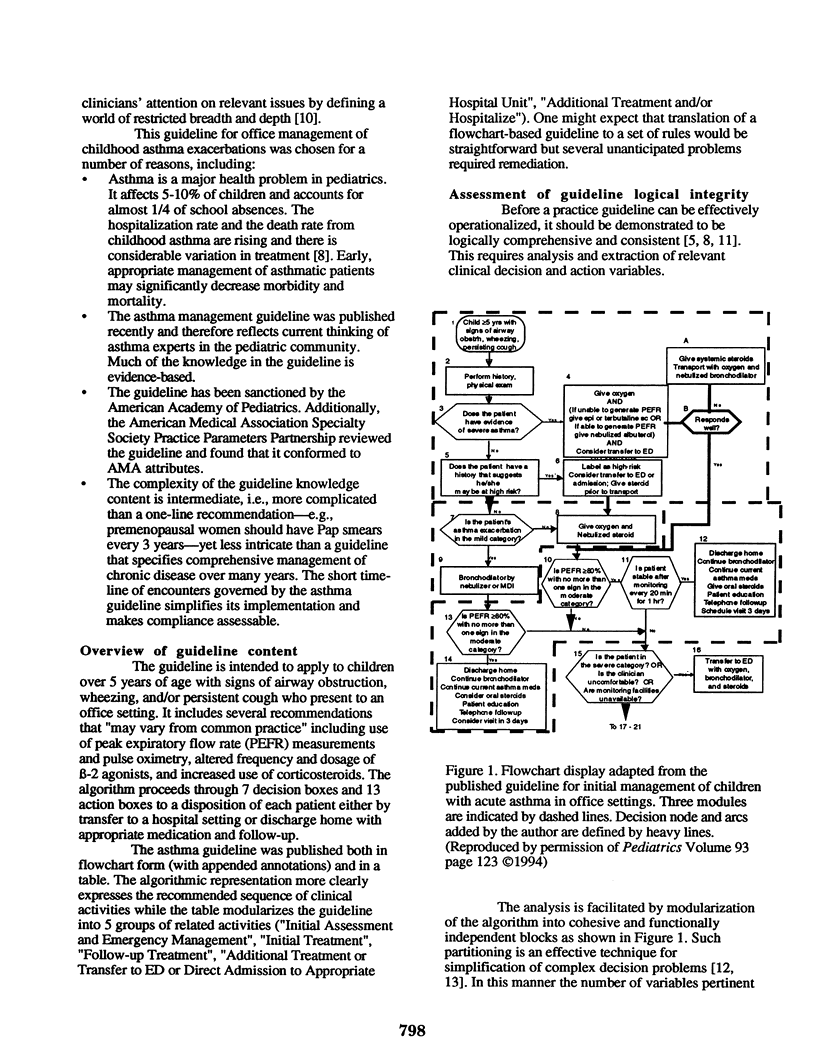Abstract
Successful local implementation of national guideline recommendations requires attention to factors that promote clinician compliance. Design of a computerized system is described that will implement recommendations from a recently published guideline for outpatient management of childhood asthma exacerbations. Logical analysis of the guideline shows that it is incomplete and contains several ambiguities that must be addressed before the guideline can be operationalized. Once the user-audience is defined guideline decision points are examined and a structured data entry system is devised. Support of clinicians' workflow is provided by an integrated capability for encounter documentation, dosage calculation, and prescription-writing. A pen-based, graphical interface represents an appropriate platform for implementation of the system because of its ease of use and portability.
Full text
PDF




Selected References
These references are in PubMed. This may not be the complete list of references from this article.
- Audet A. M., Greenfield S., Field M. Medical practice guidelines: current activities and future directions. Ann Intern Med. 1990 Nov 1;113(9):709–714. doi: 10.7326/0003-4819-113-9-709. [DOI] [PubMed] [Google Scholar]
- Grimshaw J. M., Russell I. T. Effect of clinical guidelines on medical practice: a systematic review of rigorous evaluations. Lancet. 1993 Nov 27;342(8883):1317–1322. doi: 10.1016/0140-6736(93)92244-n. [DOI] [PubMed] [Google Scholar]
- Lomas J., Haynes R. B. A taxonomy and critical review of tested strategies for the application of clinical practice recommendations: from "official" to "individual" clinical policy. Am J Prev Med. 1988;4(4 Suppl):77–97. [PubMed] [Google Scholar]
- Margolis C. Z. Uses of clinical algorithms. JAMA. 1983 Feb 4;249(5):627–632. [PubMed] [Google Scholar]
- McDonald C. J., Hui S. L., Smith D. M., Tierney W. M., Cohen S. J., Weinberger M., McCabe G. P. Reminders to physicians from an introspective computer medical record. A two-year randomized trial. Ann Intern Med. 1984 Jan;100(1):130–138. doi: 10.7326/0003-4819-100-1-130. [DOI] [PubMed] [Google Scholar]
- Rucker D. W., Maron D. J., Shortliffe E. H. Temporal representation of clinical algorithms using expert-system and database tools. Comput Biomed Res. 1990 Jun;23(3):222–239. doi: 10.1016/0010-4809(90)90018-8. [DOI] [PubMed] [Google Scholar]
- Shortliffe E. H. Computer programs to support clinical decision making. JAMA. 1987 Jul 3;258(1):61–66. [PubMed] [Google Scholar]


